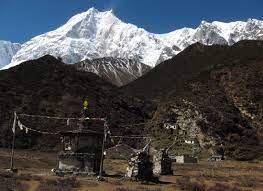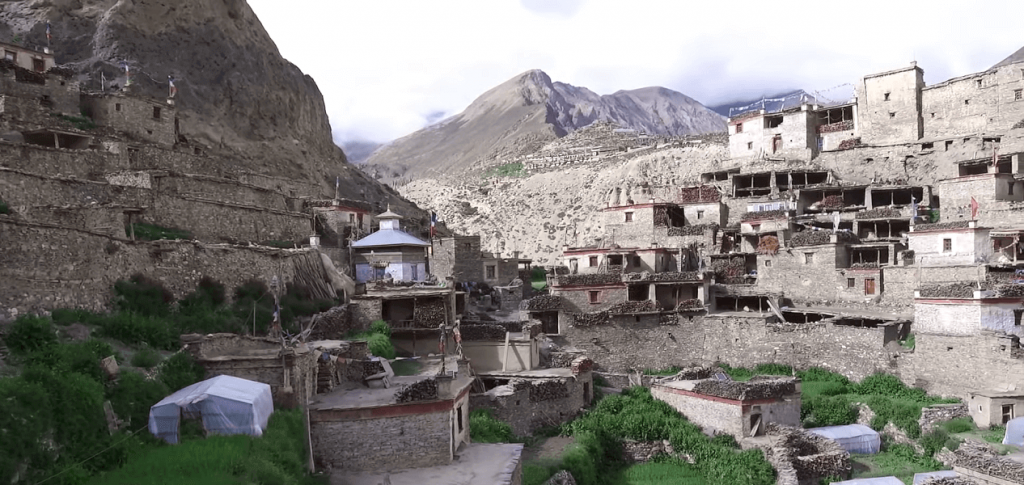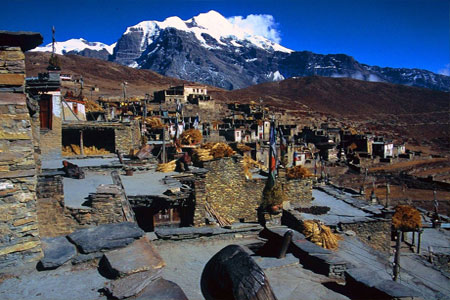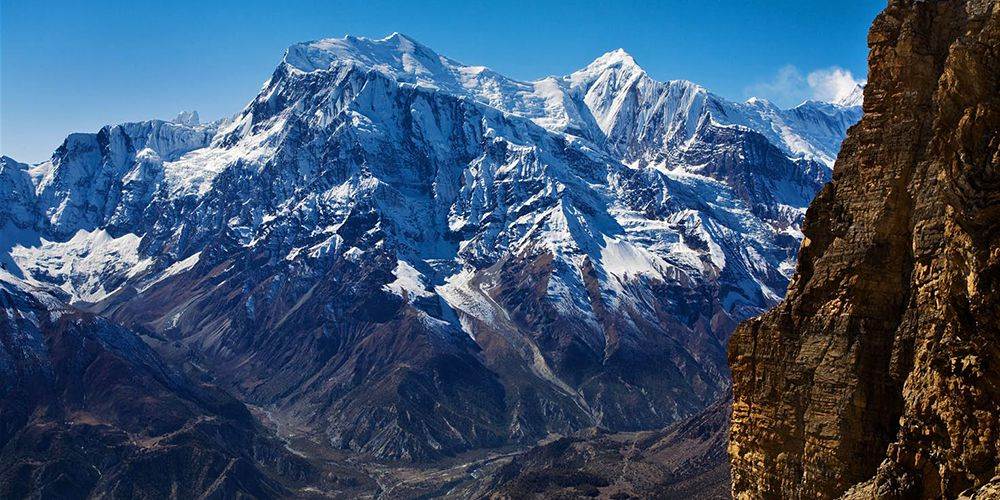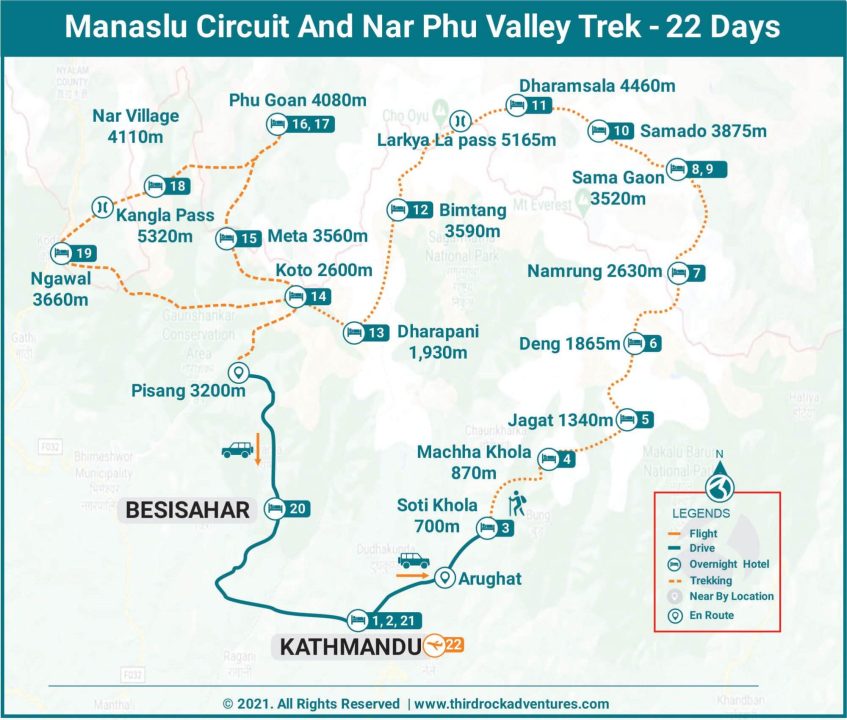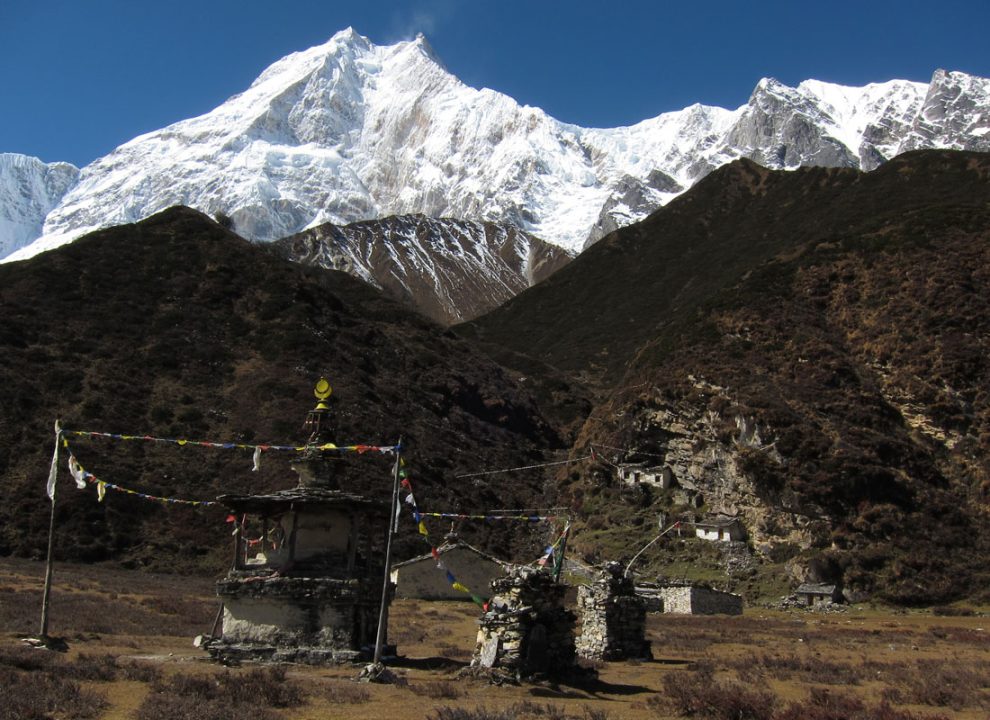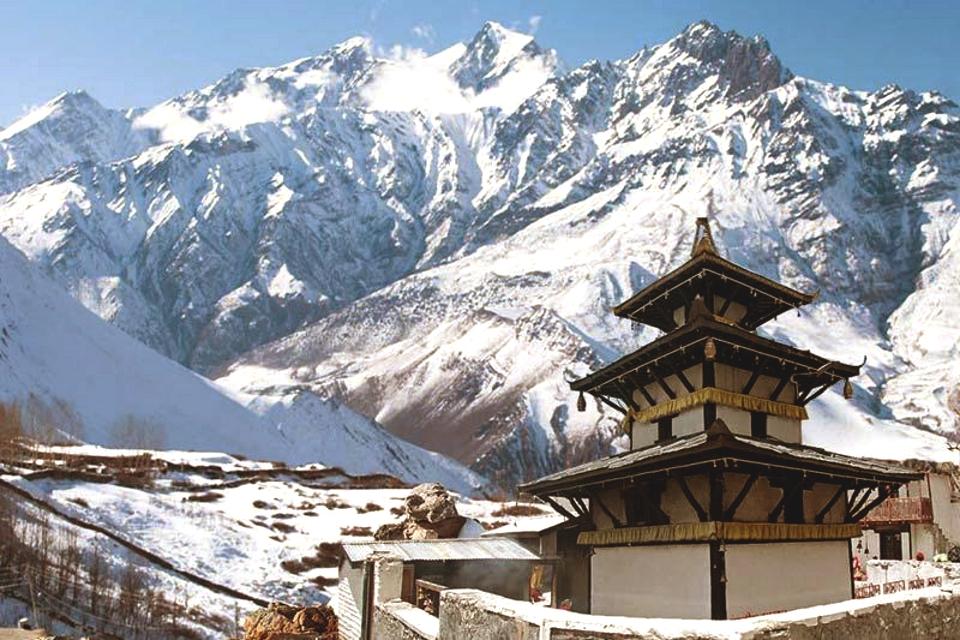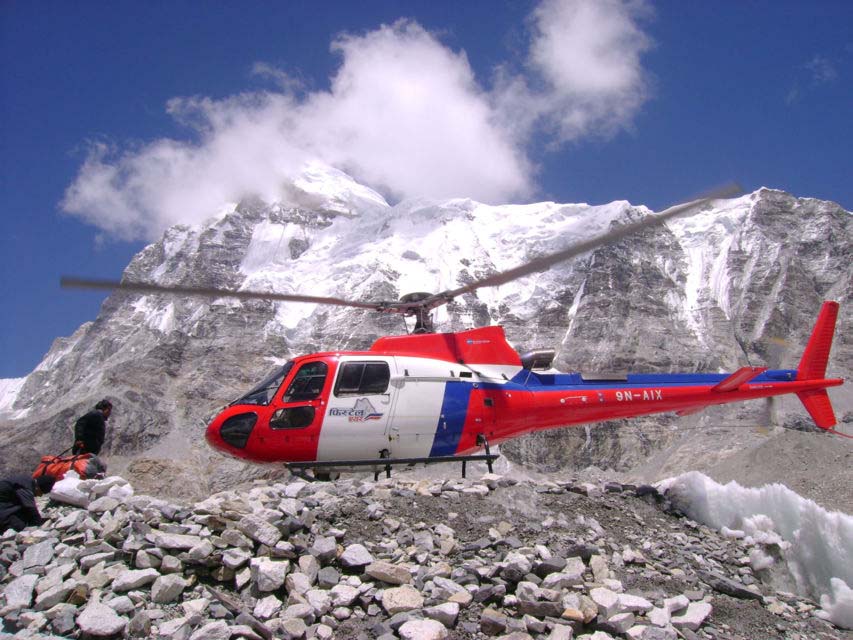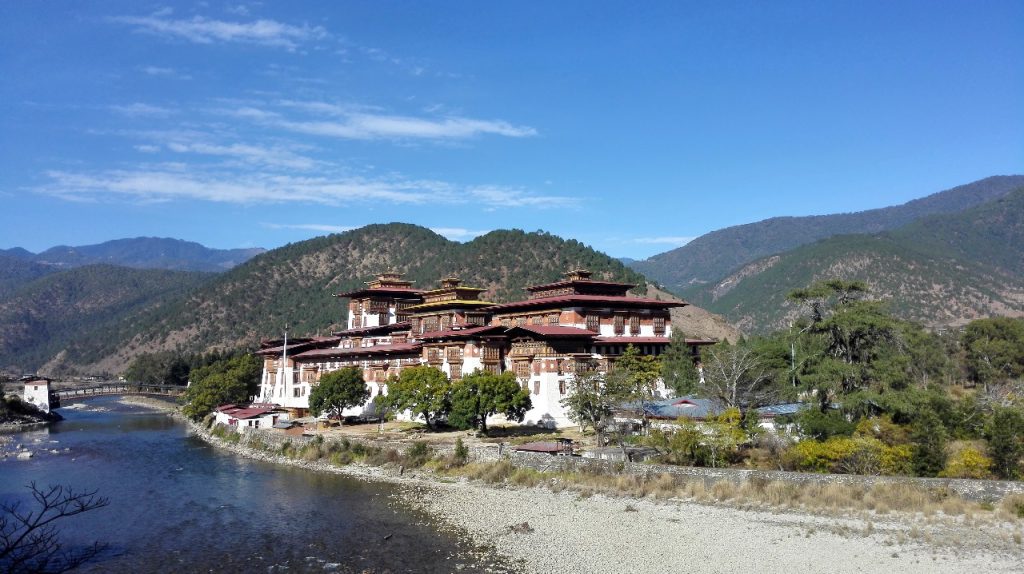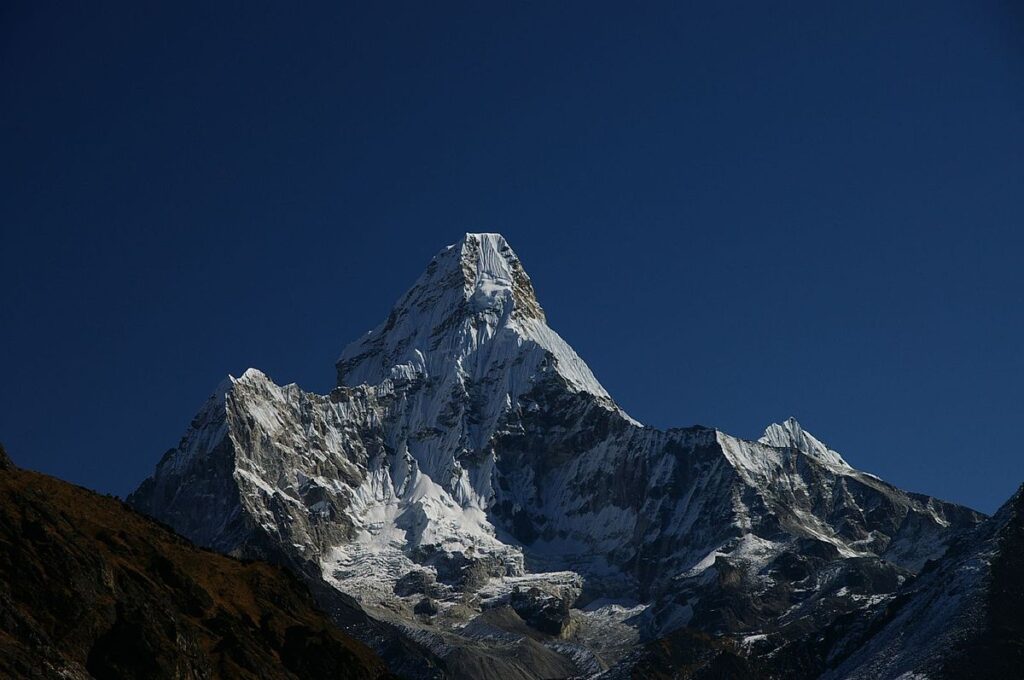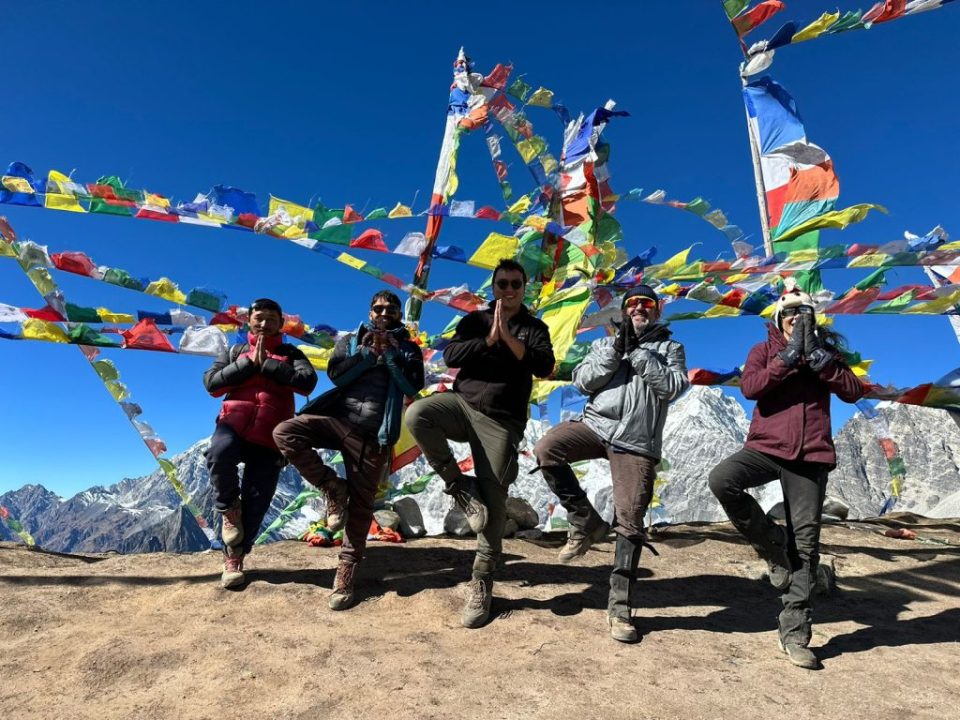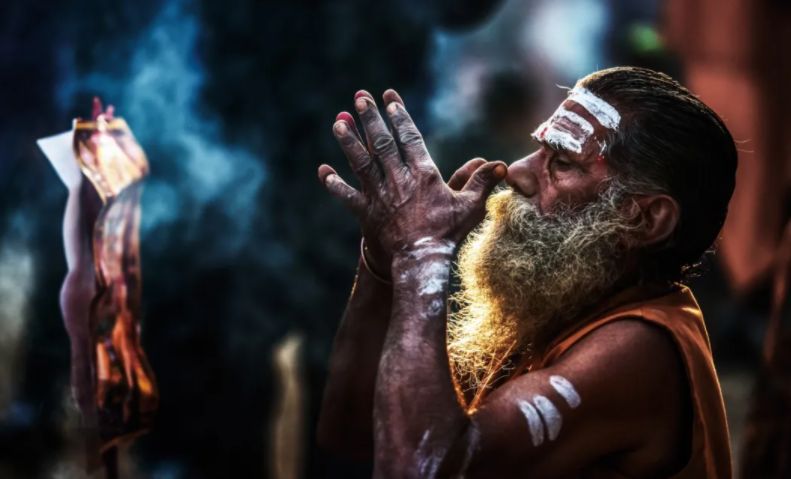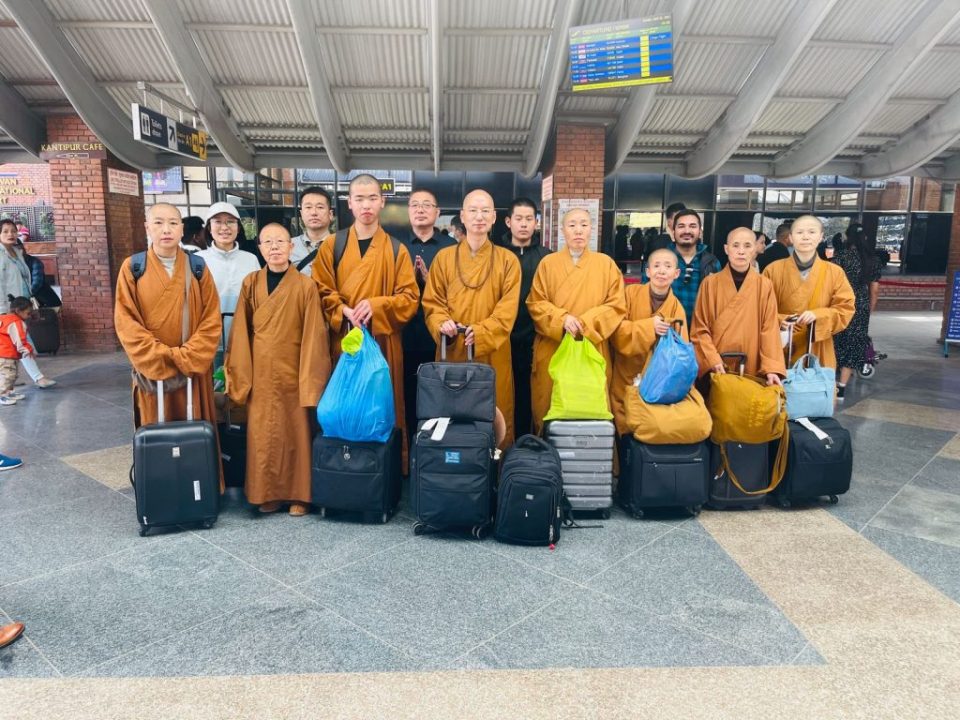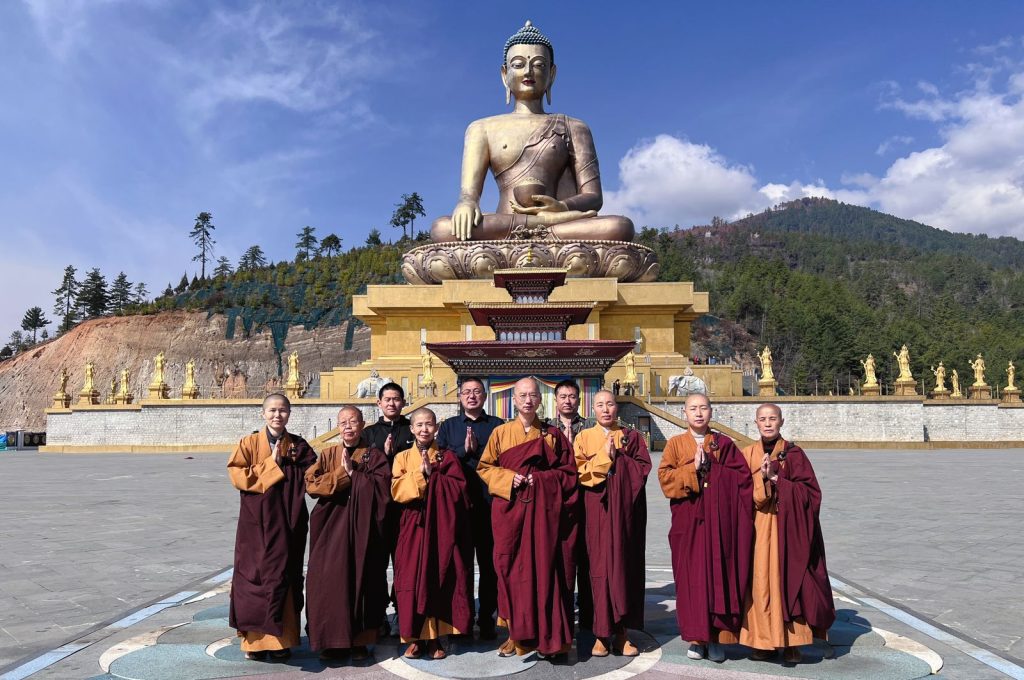Nar-Phu Valley and Manaslu Circuit Trek
Trip Introduction
Nar-Phu Valley and Manaslu trekking are some of Nepal’s restricted trekking regions, so it is less crowded than other areas. This trek is the ideal combination of culture and nature. Manaslu means “Mountain of the Spirit” and is derived from the Sanskrit word Manasa, which means intellect or Soul. It is situated in the Gorkha District. The trek follows the Budhi Gandaki River. You will pass through the various natural landscape on your Manaslu Trek adventure, including lush forests, deserted and rocky terrains.
The Nar-Phu Valley trek is the remote and least explored trek. The Nar-Phu Valley is bordered by the Annapurna and Manaslu region. The Nar Phu valley is located in a hidden corner of the Annapurna region. This trek takes you through high peaks and passes, glaciers, remote villages, narrow canyons, beautiful forests, amazing rock formations, and Tibetan cultures that are unique in their ethical practices. This trail offers breathtaking views of the Annapurna range, Dhaulagiri, Macchapuchhre, Lamjung Himal, and Tilicho Peak.
Manaslu Trek adventure, including lush forests, deserted and rocky terrains. This trek’s highlights include passing through Rhododendron and Oak forests. The Path leads you from the warm lowlands with their rice and millet terraces to the mighty Budi Gandaki gorges with their aqua waters and amazing waterfalls. It allows you to see how religious and cultural aspects of the region differ depending on location. The Nar-Phu trail winds through wild and desolate landscapes. Following the small Gurung Village, there is an old monastery. This trek is the ideal combination of culture and nature. This trail also passes through the Annapurna Conservation Area, which is home to 105 mammals, 518 bird species, 23 amphibians, 40 reptiles, and 1,226 flowering plant species. You should be aware of the situation and mentally prepare yourself. You can complete this trek if you dare. The environment, culture, and wildlife on this expedition are all diverse.
The 22-days trek begins with a seven- to eight-hour drive from Kathmandu to Soti Khola via Arughat. The trek begins in Soti, a small village on the banks of the Budhi Gandaki River. At the foot of Manaslu, reaches the village of Samagoan. Samdo, the highest village in the Budhi Gandaki valley and home to Bhotias, may be reached after a half-day hike from Samagaon. You will continue your hike to the Larkya La pass, the highest point on your journey, and then descend to the Bimtang meadowland. From there, make your way to Dharapani. From there we move toward Koto is the starting point for our trek to Nar Phu Valley, where the trail splits. You will cross the George and suspension bridges. You’ll pass through several villages, including Meta, Phu Gaon, and Nar Phedi. Kang La Pass, one of the world’s highest passes, will be crossed. From there, you’ll make your way down to Pisang village. You will drive to Besisahar.
Trip Facts
| Country | Nepal |
| Duration | 16 Days |
| Maximum Altitude | 5,320m/ 17,450ft |
| Region | Annapurna and Manaslu |
| Meals | Breakfast, Lunch, Dinner |
| Accommodation | Hotel, Lodge, Teahouses |
| Grade | Challenging |
| Best season | Mar, Apr, May, Sep, Oct, Nov |
Trip Highlights
- Trek beneath Manaslu, the world’s eighth highest peak.
- Trek on the less crowded trails.
- Explore and learn about the Bhotias culture, which has been untouched by modern civilization.
- Cross the Challenging Larkya La pass and Cross the World’s highest Pass Kang La Pass.
- Jaw-dropping Manaslu, Cheo Himal, Himlung Himal, Nemjung, Gyaji Kang, Kang Guru, Annapurna range, Dhaulagiri, Macchapuchhre, Lamjung Himal, and Tilicho Peak.
- Pass through the natural beauty, landscape, Flora, and Fauna.
- Trek into the Unexplored Villages of Nar-Phu Valley.
- Explore the Tibetan and Buddhist Culture.
Is this trek appropriate for you?
- The Nar-Phu Valley Manaslu Circuit Trek is the Challenging Trek. You can easily complete this trek if you are physically and mentally prepared and willing to do so.
- You will be Trekking for 16Days. The Path can be completed in as little as 2 hours as much as 12 hours.
- The walk is not tricky, there is no Climbing or Scrambling but the path is rocky and hilly.
- Each day you will cover 200 to 400 meters in height while trekking. The highest point in the trek you will reach on the trek is 5,320m.
- The weather and Remoteness of this trek, as well as dealing with the high altitude, require a slow pace and the need to stay hydrated.
Itinerary
| Days | Activities | Duration |
| 1. | Arrival at TIA Kathmandu (1,400m/4,592ft) | |
| 2. | Drive to Soti Khola via. Arughat (700m/2,296ft) | 7-8hrs |
| 3. | Trek from Soti Khola to Machha Khola (870m/2,854ft) | 5-6hrs |
| 4. | Trek from Maccha Khola to Jagat (1,340m/4,396ft) | 6-7hrs |
| 5. | Trek from Jagat to Deng (1,865m/6,118ft) | 6-7hrs |
| 6. | Trek from Deng to Namrung (2,630m/8,626ft) | 6-7hrs |
| 7. | Trek from Namrung to Sama Gaon (3,525m/11,565ft) | 6-7hrs |
| 8. | Acclimatization Day in Sama Gaon (3,525m/11,565ft) | |
| 9. | Trek from Sama Gaon to Samdo (3,850m/12,631ft) | 4-5hrs |
| 10. | Acclimatization Day in Samdo (3,850m/12,631ft) | |
| 11. | Trek from Samdo to Dharmasala (4,460m/14,632ft) | 4-5hrs |
| 12. | Trek from Dharmasla to Bimtang (3,590m/11,780ft) Via Larkya La (5,106m/16,752ft) | 8-9hrs |
| 13. | Trek from Bimtang to Dharapani (1,963m/6,440ft) | 7-8hrs |
| 14. | Trek from Dharapani to Koto (2,600m/8,528ft) | 5-6hrs |
| 15. | Trek from Koto to Meta (3,560m/11,677ft) | 7-8hrs |
| 16. | Trek from Meta to Phu Goan (4,080m/13,383ft) | 7-8hrs |
| 17. | Acclimatization day at Phu Goan (4,080m/13,383ft) | |
| 18. | Trek from Phu Goan to Nar Phedi (3,490m/11,450ft) | 4-5hrs |
| 19. | Trek from Nar Phedi to Nar Village (4,110m/13,481) | 2-3hrs |
| 20. | Trek from Nar Village to Ngawal (3,660m/12,005ft) via Kang La Pass (5,320m/17,450ft) | 11-12hrs |
| 21. | Trek from Ngawal to Pisang (3,200m/10,496) and Drive to Besisahar | 7-8hrs |
| 22. | Drive back to Kathmandu | 6-7hrs |
| 23. | Rest Day at Kathmandu | |
| 24. | Departure. |
Itinerary
Departure from : Kathmandu, Nepal
Arrival On : Kathmandu, Nepal
Day 1
Arrival at TIA Kathmandu
Upon arrival at Tribhuvan International Airport (TIA). Our agent will greet you and accompany you to the hotel. Drive to the hotel and check-in. Our guide will come to see you in the evening and give you a brief overview of the journey. At the hotel, we had dinner and stayed the night.
Day 2
Drive to Soti Khola via Arughat
Today, after breakfast, we’ll take the Kathmandu-Pokhara highway to Soti Khola. We’ll drive through a small town, a green terrace, and a hillside. From Kathmandu to Arughat, we’ll be driving on paved roads. We’ll stop for lunch on the way. We’ll be on the road for 7 to 8 hours. Dinner and Overnight at the Lodge.
Day 3
Trek from Soti Khola to Machha Khola
Today is the first day of our trek; we will leave for the Machha Khola after breakfast. We will be walking through various landscapes such as forests, rice paddies, rushing rivers, and waterfalls. We should go through the bridge. We’ll hike through a beautiful forest and up a hill above the Budhi Gandaki River. We’ll stop for lunch on the way. We’ll be passing through the Gurung village of Khursane. We will be walking for about 5 to 6 hours. Dinner and Overnight at the Lodge.
Day 4
Trek from Maccha Khola to Jagat
We’ll leave for Jagat after breakfast today. Today, we’ll follow the George and make our way up to the river. We will be passing through a narrow path first, followed by a gentle path that goes up and down. To get to Khorlabesi, we’ll have to cross the Tharo Khola. We’ll arrive at Tatopani after some uphill and downhill hiking and rest for a while. We’ll ascend another hillside before crossing the Budhi Gandaki on a suspension bridge. We’ll stop for lunch on the way. Thus, after a few ups and downs, it arrives at the wonderful village of Jagat. Dinner and Overnight at the Lodge.
Day 5
Trek from Jagat to Deng
We’ll leave for Deng after breakfast today. We’ll be walking through a dense tropical forest. Our trails begin with a climb up a rocky hill from which you can see Sringi Himal. We’ll keep walking upstream until we reach a long suspension bridge in Philim, a large Gurung village. We’ll stop for lunch on the way. The trail then passes through millet fields before arriving at Ekle Bhatti. We’ll be walking for 6 to 7 hours. It travels through bamboo forests before arriving in Deng, a Buddhist village. Dinner and Overnight at the Lodge.
Day 6
Trek from Deng to Namrung
After breakfast today, we will depart for Namrung. After a few minutes of walking, we will cross the Budhi Gandaki River and climb up to Rana village. The valley, which Passes through lush forests, alpine vegetation, and charming villages inhabited by ethnic groups from the Manaslu region we’ll eat our lunch on the way. Along the way, we’ll pass through several gompas. The trail then climbs through bamboo and rhododendron forests before arriving in Namrung. Dinner and Overnight at the Lodge.
Day 7
Trek from Namrung to Sama Gaon
After breakfast today, we’ll depart for Sama Gaon. While walking through the village, you will be able to see Siring, Ganesh Himal, and Mount Himal Chuli to the south. We’ll be climbing steadily into the alpine on the trail. We’ll stop for lunch on the way. After Lho, the trail descends to a stream and follows it up for a long-distance through damp forests until it reaches the plateau at Shyaula. We’ll be walking for 6 to 7 hours. Dinner and Overnight at the Lodge.
Day 8
Acclimatization Day in Sama Gaon
Today is our acclimatization day in Sama Gaon, so we will begin our day a little later than usual. Relax and enjoy your breakfast; we’ll need plenty of rest for our next adventure. Alternatively, we can explore or go on a short hike to learn about Sherpa culture. Hiking up a hill near Sama Gaon will lead you to the old gompa, Pungyen Gompa, a monastery with spectacular views of the glacier. You can learn about and experience Sherpa culture while also resting for the day. Dinner and Overnight at the Lodge.
Day 9
Trek from Sama Gaon to Samdo
We’ll be leaving for Samdo today. We’ll drop down to the Budhi Gandaki River and follow the bridge. We will only be walking for a short period today, so our bodies will be able to adjust easily. We’ll stop for lunch on the way. We’ll be walking for 4 to 5 hours. After a pleasant walk, we arrive in the beautiful village of Samdo, which is famous for its yak grazing. Dinner and Overnight at the Lodge.
Day 10
Acclimatization Day in Samdo
Today is our acclimatization day in Samdo, so we will begin our day a little later than usual. Relax and enjoy your breakfast; we’ll need plenty of rest for our next adventure. Today you can either rest all day or go on a hike; there are two hike options. You can hike up the easy trail or the slightly more difficult one. This route offers spectacular views of Manaslu as well as other Himalayan ranges such as Simrang, Hiunchuli, Ngadi, Larkye Peak, Cheo, and possibly Kang Guru behind the pass. The difficult path will be a full-day hike. Dinner and Overnight at the Lodge.
Day 11
Trek from Samdo to Dharmasala
We will depart for Dharmasala today, passing through the seasonal Tibetan market Larke Bazaar. Following that, we will descend to the Budhi Gandaki River. The path crosses through large Mani walls. It climbs through the tundra and juniper after crossing the bridge. We’ll stop for lunch on the way. We’ll be walking for 4 to 5 hours. The trail then climbs in and out of the gorge until it reaches Dharmashala, also known as Larkya Phedi. Dinner and Overnight at the Lodge.
Day 12
Trek from Dharmasla to Bimtang via Larkya La
We’ll trek to Bimgtang today through Larkya La. We’ll be walking for a little longer today, which will be more difficult than the other days. We’ll pass by several clear glacial lakes, lovely valleys, and a diverse range of flora and fauna, as well as snow-capped mountains. The walk from Dharmashala to the Larkya La pass takes three to five hours. Himlung Himal, Cheo Himal, Kang Garu Peak, and Annapurna II can all be seen from Larkya La pass. We’ll stop for lunch on the way. Down a trail that runs alongside a gorge. The route then turns a hill, the valley widens, and the trail descends to a big meadow with a Mani wall, bringing you to Bimgtang. Dinner and Overnight at the Lodge.
Day 13
Trek from Bimtang to Dharapani
Today is the last day of your journey; after breakfast, we will depart for Dharapani, gradually descending through the bamboo, pine, and rhododendron forest. We’ll stop for lunch on the way. We will be walking for about 7 to 8 hours. Dinner and Overnight at the Lodge.
Day 14
Trek from Dharapani to Koto
We’ll leave for Koto after breakfast. We’ll be walking for 5 to 6 hours. We will travel along the Marsyangdi River, passing through Bagarchhap village. We will see Annapurna II on our way to Bagarchhap village. We’ll stop for lunch on the way. We will then proceed to Timang Village, where we will be able to see Manaslu. We’ll continue walking through the pine forest until we reach Koto Village.
Day 15
Trek from Koto to Meta
We’ll leave for Meta after breakfast. We’ll be walking for 7 to 8 hours. We will cross the river via the bridge and enter the Nar Phu Valley, which is located above the Phu River. The Annapurna region’s least-explored trail is filled with caves and Dharamsala. We’ll stop for lunch on the way. The trail then passes through a wide waterfall, after which the woods thin and the views become clearer. Finally, to reach Meta Village, we must ascend a steep hill. Dinner and Overnight stay at the Lodge.
Day 16
Trek from Meta to Phu Goan
We’ll leave for Phu Goan after breakfast. We’ll be walking for 7 to 8 hours. We’ll pass by some lovely Tibetan Chortens. We will arrive at the dry field in Chyakhu after crossing the suspension bridge. The trail will be enjoyable because it is surrounded by beautiful mountains. We’ll stop for lunch on the way. We will have the opportunity to see Pisang Peak and Annapurna II from Kyang village. To get to Phu Goan, we’ll walk along a rocky path that led alongside the Phu River. Dinner and Overnight stay at the Lodge.
Day 17
Acclimatization Day at Phu Goan
Today is a wonderful day at Phu Village. We’ll start our day a little later than usual. After breakfast, we’ll go for a walk around the village. We will observe the villagers’ way of life, such as how they extract oil from mustard or spin wool. You can also hike up to Himlung Himal Base Camp, which provides a spectacular view of Himlung. We will visit the Tashi Lhakhang Monastery, which is listed as one of the top 108 monasteries in the world. Dinner and Overnight stay at the Lodge.
Day 18
Trek from Phu Goan to Nar Phedi
We’ll leave for Nar Phedi after breakfast. We’ll be walking for 4 to 5 hours. At Phu Khola, we’ll take the trail down through a small gorge. We will cross several small streams and suspension bridges before ascending to Yughat. We’ll stop for lunch on the way. Following that, we will proceed to Lapche River George, as the path is rich in Flora and Fauna. There are no lodges or guest houses in Nar Phedi, so we will be staying at a monastic school, which is no less than a guest house in terms of hospitality.
Day 19
Trek from Nar Phedi to Nar Village
We’ll leave for Nar Village after breakfast. We’ll be walking for 2 to 3 hours. We have a short distance to cover, so we will walk slowly and comfortably. We’ll see a lot of colorful stupas and Chortens along the way. We will take in the breathtaking view of Pisang Peak. We’ll stop in Nar Village for lunch. It is similar to Phu village in terms of geography. Dinner and Overnight stay at the Lodge.
Day 20
Trek from Nar Village to Ngawal via Kang La Pass
Today, after breakfast, we’ll travel to Ngawal via the Kang La Pass. We should start our day early because we will be moving a long distance. We’ll be walking for 11 to 12 hours. The day will be worth walking because of the breathtaking views from the pass as we get the view of Gangapurna, Annapurna II, Tilicho Peak, and the surrounding peaks. From there, we’ll make our way down to Ngawal, passing by beautiful Buddhist flags and small Chortens. Dinner and Overnight stay at the Lodge.
Day 21
Trek from Ngawal to Pisang and Drive to Besisahar
We’ll leave for Pisang after breakfast. We’ll be walking for 2 to 3 hours. Today’s walk will be easy because we’ll be walking on a wide trail. As we descend, we will see beautiful greenery all along the trail, and the weather will gradually warm up. The lake greets us as we arrive in Pisang. We’ll eat lunch on Pisang before driving to Besishar. The drive will last 6 to 7 hours. Dinner and Overnight stay at the Lodge.
Day 22
Drive to Kathmandu
Today, after breakfast, we will drive for 5 to 6 hours from Besisahar to Kathmandu. We’ll take the Kathmandu-Pokhara Highway, then a rocky path alongside the Marshyangdi River. The route goes through Besisar, Muglin, Galchi, Naubisie, and Kathmandu. Dinner and Overnight at the Hotel.
Day 23
Rest Day in Kathmandu
Today is your last day in Kathmandu and your relaxation day. You are free to do whatever you choose with your day. You are free to walk through Thamel and Basantapur streets as much as you wish. Enjoy a complimentary farewell supper at a traditional Nepali restaurant later that evening.
Day 24
Departure
The 11-day journey has concluded. Today is your last day in Kathmandu. Our representative will have a short discussion on the trip and take your feedback after a hearty breakfast. Following this session, he will drive you to the airport in our private transportation 3 hours before your trip.
Route Map
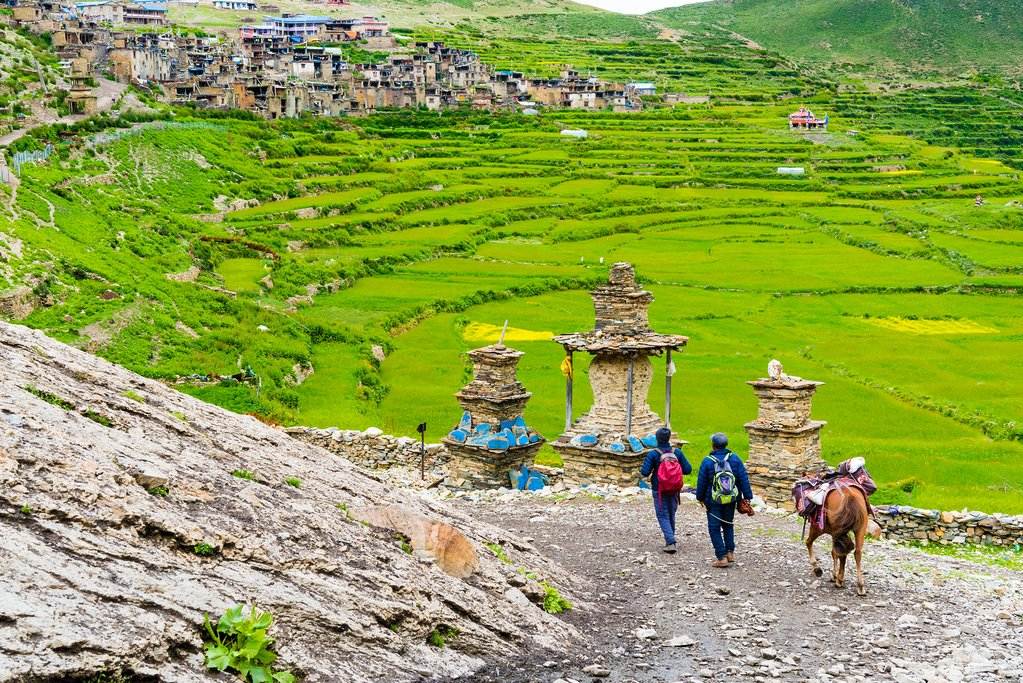
Altitude Map
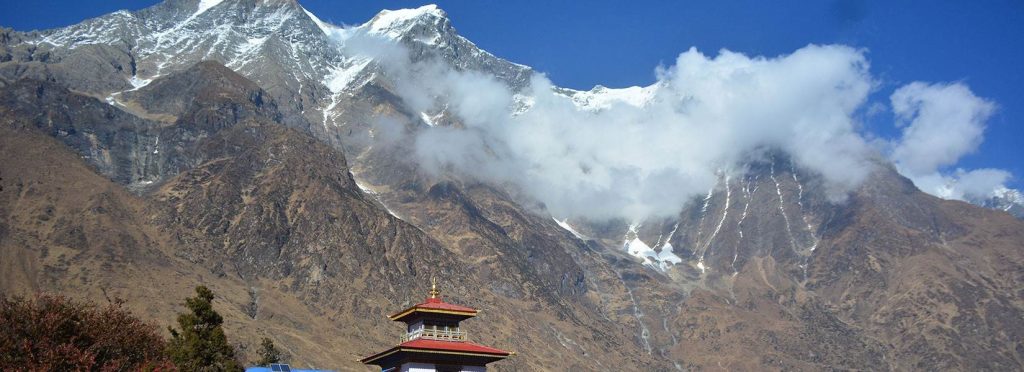
What's Included
- Arrival and Departure: Airport – Hotel – Airport (Pick Up and Drop).
- Hotel Accommodation in Kathmandu: 3 nights in a star category hotel (Twin sharing and BB basis.)
- Welcome Dinner and farewell dinner at Nepali culture restaurant in Kathmandu.
- Food & Lodging: 3 meals a day (Breakfast, Lunch, Dinner) along with accessible accommodation sharing at Hotel/Lodge/teahouse during the trek.
- Permits: All necessary Permits and Paper works- Manaslu Rap, MCAP Permit, ACAP Permit, and TIMS Card.
- All government and local taxes if necessary.
- Member transportation: Road Transportation: Kathmandu- Soti Khola, Pisang to Beshisahar, and Beshisahar to Kathmandu.
- Drinking water: 2 liters of boiled water to carry on thermos per day per member.
- Guide: Government licensed Guide (English speaking) during the trek
- Porter: Porters (2 trekkers: 1 porter) up to 15kg during the trek.
- Insurance: Insurance for all involved Nepalese staff during the trek.
- Comprehensive Medical kit.
What's Not Included
- Air Fare: International flight airfare (from and to Kathmandu).
- Nepal entry visa fee.
- Extra night in Kathmandu: Extra nights’ expenses in Kathmandu. In case of early arrival or late departure, early return from Trekking (due to any reason) than the scheduled itinerary.
- Personal Insurance: Travel and high-altitude insurance. *Mandatory
- Personal Expenses: Telephone calls, Internet, Toiletries, battery recharge, hot shower, laundry, soft drinks, beer, and any alcoholic beverages.
- Personal Equipment: Clothing, Packing Items or Bags, Personal Medical Kit, Personal Trekking equipment.
- Rescue Evacuation: Medical and emergency rescue evacuation costs if required. (Rescue, Repatriation, Helicopter, Medication, Medical Tests and Hospitalization costs).
Equipment List
What to bring ?
General
Tailor Your Holiday
Everyone has their own preferences in terms of destination, journey time, and budget. As a result, sticking to our plan isn't necessary. We will create a personalized itinerary for you that includes accommodations, transportation, meals, and tour guides. We guarantee you the best Tailor-made Package because this is your trip. You have the option to personalize it, as your liking. Let us Plan together to make your Vacation worth it.
Fixed Departure
Why Travel With Us?
Secure Online Payment, No Credit Card Fee
Travel with Locals. Support Locals
Lifetime Deposit
Private & Tailor-Made Trips
24/7 International Support
Support Local Communities & Donate to Charity
All Inclusive Price
Secure Online Payment, No Credit Card Fee
The ideal season to travel
Drive to Soti Khola
- The Distance between Kathmandu and Soti Khola is 136 km.
- Traveling to Soti Khola by jeep will take around 7-8 hours.
- The route to Soti Khola from Kathmandu is Naubise – Galchi – Kurintar – Muglin – Arughat and lastly Soti Khola.
Altitude sickness
Altitude sickness is the sneaky monster that sometimes attacks even the fittest trekkers beyond 2500m (8,000ft). As a result, preventing altitude sickness on the trek and remaining healthy throughout the trek should be your top priorities. With lower air pressure and lower inspiratory oxygen pressure, you’ll be hiking into the high-altitude zone. Acclimatization is the process of progressively becoming familiar with the new climate or changing environmental conditions. Almost everyone going quickly from lower to higher elevations requires altitude adaptation.
At elevations beyond 2,500 meters, AMS symptoms can be detected like:
- Increased breathing.
- Increased urination
- Restless sleep.
- Periodic breathing at night because of altitude.
- Shortness of breath.
- Extreme fatigue.
- Respiratory failure.
- Cerebral edema.
To guarantee that the condition does not worse, certain precautions should be taken. However, if the symptoms increase, it may be necessary to return to a lower height and seek medical assistance.
- Walk slowly and gradually, as our bodies require time to adjust to the oxygen level. At least one day of acclimatization rest is required for high altitude trekking, and you should go as high as possible before returning to a lower height for the night.
- To gain strength stamina, you should undertake various strength training exercises such as running, cycling, jogging, push-ups and going to the gym.
- The greatest remedy is to always stay hydrated. On your walk, instead of drinking cooled water, drink warm water and avoid alcohol, cigarette, and tobacco. You should also eat a balanced diet for strength.
- Before traveling to an altitude greater than 3000 m, you must properly acclimate. If your body displays any signs of altitude sickness, you must either stop immediately where you are or consider descending to a lower altitude.
- Bring a Diamox subscription with you on the trek because it is the most effective altitude sickness medication. However, you should consult with your doctor to see whether it is beneficial.
Things to know before traveling to Annapurna and Manaslu region.
Drinking Water
Especially for trekkers, it is very necessary to hydrate your body at a higher altitude than in lower elevations to avoid dehydration and altitude sickness. Lack of fluid can be the main hindrance during the trek. You should hydrate your body with at least 3-4 liters of water daily (Tea, soup, or normal drinking water).
Annapurna region and Manaslu Region do not have a water shortage. You can get tap water, spring water throughout the trek but it is not safe to drink without purifying it. Also, the sale of plastic water bottles is banned in Annapurna Region since 2015. You will not get to buy plastic water bottles in the Annapurna region. In the Manaslu region, you can buy the plastic water bottle but, it gets expensive as you climb to a higher altitude and it pollutes the local ecosystem also. As you can easily get water throughout the trek and it’s safe to drink after purifying, better to bring your water bottle. We recommend you use a Reusable water bottle or water pouch favorable for both hot and cold water. You can also use a filtration system like LifeStraw.
Here are some ways that you can use to make the water drinkable.
1. Boiled water
Boiling water is the best way to purify the water. As we are climbing to a higher altitude you need to boil the water for about 3-minute and season it with a pinch of salt before drinking. You can get free cold water in the teahouse but for boiled water, it cost around 1-1.5 USD per liter.
2. Purification tablets or electrolyte powder.
Purification tablets like chlorine or iodine tablets are commonly used tablets by trekkers to disinfect the water. 1 tablet is enough for a liter of water. It takes around 30 min for the tablets to dissolve and become drinkable. Water, purified by tablets may leave a taste in your mouth.
Electrolyte powder is another option. Electrolyte powder is a better way to purify water than tablets because electrolyte powder contains minerals such as salt, Potassium, Magnesium, which are important for your body during the trek.
3. UV Light water purifier/ SteriPEN.
It is a simple, effective, and environment-friendly way to purify water. It kills the bacteria and virus within 10 sec by exposing them to ultraviolet light using Steripen, without changing the flavor of the water. This is a highly recommended method of purifying water.
Electricity and Internet facility
Electricity facility.
Despite the challenging geography and weather conditions, the Annapurna and Manaslu region has been providing electricity and access to the Internet.
Electricity in Annapurna and Manaslu Region is powered either by local hydropower electricity or Solar panels electricity, so you will not have issues with electricity or charging during this trek. At lower altitudes, all the hotel rooms have charging sockets and the use of electricity is free. However, at a higher altitude, there may be no charging socket in your rooms. There is a commonplace for charging usually in the dining area, and you may be charged extra for charging devices on a different basis (Per device, per hour, and voltage of your device).
Charging a mobile phone may cost you around 2$- 4$ per device at a higher altitude.
Internet Facility and Service
Internet and network facility is must need to contact your family, friends, employee, to post updates and upload photos during the trek. Internet access/WIFI is available throughout the Annapurna and Manaslu Region, but it lacks a stable connection as you climb higher due to the lack of signal reach to the tower. At higher altitudes, you will have access to the internet, but have to pay extra. Most of the lodge/ teahouses in these regions has Wi-Fi availability. Some provide it free of charge while some charge an amount.
WI-FI service in higher altitudes will cost you around NPR 300/USD 2.5
However, you can connect to the internet via. your cellular network’s data package.
Both NTC and NCell cellular service network is available in Annapurna Region. But not in the Manaslu region. Only NTC -CDMA network is available in Manaslu Region, known as the SKY network. So, you have to use CDMA phones in the Manaslu region.
You can buy the Sky Simcard or NCell or NTC from the stores in Kathmandu for 1$. CDMA’s PDSN (Packet Data Switching Network) provides you high a speed internet connection up to Kang la pass which is the highest point of our trek. Your phone may not support a CDMA network, so first check your phone in any local cyber-shop if it supports a CDMA network. If not buy a phone/set in Kathmandu that supports NTC’s CDMA network.
NTC cellular service is most preferred over NCell. NTC provides good service and signal connectivity, in comparison to NCell.
| Buy NTC data package
Dial*1415# |
Cost of data package in NTC:
-14GB=7$ (Valid up to 28days -30GB=15$ (Valid up to 90 days) |
Check balance
Dial *1415# |
| Buy NCell data package
Dial *17123# and select. |
Cost of data package in NCell:
-15GB=10$ -25GB= 12$ (Valid up to 30 days) |
Check balance
Dial*101# |
| Buy CDMA data package by SMS.
Write ‘NTC Data packages’ and send it to 1415. Buy CDMA voice package by SMS. Write ‘NTC voice packages’ and send it to 1415. |
Check balance
Dial*1415# and Press 1. |
For more information about the NTC CDMA network, here is the link.
Document needed to buy a sim card.
For foreigner = 1 passport size photo, Passport photocopy, or valid identity card.
For Nepali = 1 Passport size Photo, Photocopy of Citizenship.
Some useful tips to reduce the use of electricity.
- Extra batteries for the camera.
- Power bank with 5000-10000mAh.
- The solar charger and solar lamp (LuminAID lamp).
- As possible less usage of a device with low brightness, GPS, and WI-FI off.
Essential Backpack items for the trek.
The bag of a trekker also reveals the trekker’s level of experience. A good trekker should be a smart backpacker. You should be pre-prepared for the things that you need in the trek.
Here are some of the things that you need to take with you for the trek.
Travel documents
- Airline tickets with the itinerary.
- Travel insurance policy documents.
- Valid passport.
- Copies of passport.
- Passport-sized photos.
- Nepalese cash.
- Travel permits.
Clothing
- A pair of waterproof trekking shoes or hiking boots.
- A pair of flip flop slippers or running shoes.
- 2 sets of thermals (leggings and tops)
- Pairs of hiking long sleeve shirts or tops.
- Pairs of hiking shorts and pants.
- Fleece jumpers or a set of tracksuits.
- Good quality windproof down jacket.
- Lightweight waterproof rain jacket and pants.
- Neck gaiter, leg warmer, and packet of pocket hand warmers.
- 5-6 pairs of quick-dry socks, underwear, sports bra.
- Pair of inner and outer gloves.
- Knitted Hat, sun cap, beanie, or bandana.
- Glacier Sunglasses and eyeshade.
Trekking equipment
- Waterproof trekking bag of 40-50 liter and Rucksack of duffel bag (if your backpack is not enough for all your item and need a potter).
- Reusable water bottle (both hot and cold) of at least 1-2litre.
- A sleeping bag and sleeping bag liner.
- Trekking stick/ poles
- Crampons (If you are trekking in the Winter season, Jan-Feb).
- LED Headtorch or solar lamp (LuminAID Nepal lamp is best as it is solar-charged and very much portable)
- Plug adapter, Charging appliances, power bank, batteries.
- Pocket knife.
- Travel Wallet.
Toiletries
- Rolls of Toilet paper, wet wipes, and tissue.
- Medium-sized quick-drying towel.
- Toothbrush and toothpaste.
- Hand sanitizer.
- Sunscreen, lip balm, body lotions.
- Portable mirror.
- Shampoo and soap.
Personal First Aid Kit
- Antibiotics
- Painkillers, Paracetamol, ibuprofen, aspirin, Nicole
- Sanitary pads
- Anti-inflammatory spray.
- Anti-Nausea tablets.
- Anti-diarrhea pills or power.
- Altitude sickness tablets.
- Water purifying tablets or electrolyte powder.
- Mosquito and Insect Repellent.
- Salt or anti-leech oil (If traveling in the rainy season, Jul- Aug).
- Earplugs
You can buy or hire trekking clothes and equipment in Kathmandu. If you are buying it, you have to allow an extra day for shopping; however, if you are hiring it, you must inform us in advance so that we can arrange it before you arrive in Kathmandu. This way you can reduce the weight of your luggage and save time and money.
Branded, New or Used trekking clothes and equipment are available around the Thamel area at a reasonable price.
Accommodation, Meal, and Transportation
Accommodation
We will accommodate in star hotel during our stay in Kathmandu. During the trek, we will stay in Lodges/ Teahouses or Homestays.
Meal
During the trek, we will provide you three-time meals. You can choose from the given menu.
Breakfast– French toast, Cornflakes, Cereal, Pancakes, Bread butter, Eggs, Oatmeal, Tsampa porridge, Tea, etc.
Lunch– Dal Bhaat set (Rice, Vegetable curry, Meat curry, Lentils, Tomato Chutney, Salad, Papad) vegetable noodle soup, chicken noodles soup, Mushroom garlic soup, Fried noodles, Mo: Mo, Fired yak cheese Potato, etc.
Dinner– Dal Bhaat set (Rice, vegetable curry, meat curry, Lentils, Tomato Chutney, Salad, Papad), Mo: Mo, fried noodles, Spaghetti, Thukpa, Pizza, Stews, Fried Potato, etc.
Besides these, there are a variety of other options of food. You have to buy, it from your pocket.
Transportation
By Bus- From Kathmandu airport to Hotel at Kathmandu and vice-versa.
From Kathmandu- Soti Khola.
From Pisang to Beshisahar.
From Beshisahar to Kathmandu.
Guide and Staff Arrangements
Our well-qualified and professional staff will handle all your activities throughout your trek. They will do all the escorting. We are providing you with a highly experienced and licensed guide with fluent English speaking and has excellent communication as well as navigation skills. They will accompany you from Kathmandu and guide you throughout the trek. Each group of 4-5 trekkers will be assigned an assistant guide, as well as a porter for two trekkers (2*15kg =30kg). If your luggage weighs more than 15kg you will be provided a porter individually but you will be charged for 2 people.
All our lead guides, assistant guides, and potters are well professional and experienced. So, we hope for your respect and cooperation with them throughout the trek.
A typical day on the Nar Phu valley and Manaslu Circuit trek.
Every day will begin with the ringing of your alarm clock at 6 a.m. and a knock on your door from your guide with the invitation of breakfast. Get up, have breakfast, pack your backpack and get ready to start your day’s walk by 7 a.m.
You will walk through the green lush forests of Rhododendron, Pine, and Oaks beside Budhi Gandaki River, enjoying the scenery, crossing suspension- wooden bridge, clicking photos, creating memories, passing by other travelers, interacting with your guide, hearing each other’s stories.
Lunch will be served at a local teahouse in the late afternoon (1-2 am). Having lunch and an hour of rest, we will proceed to the day’s final destination as per the itinerary.
On arrival at the destination, check in at your accommodation. Get freshen up and some rest. As every teahouse where we stay has a large common dining area with a wood-burning stove in the center, there you will get to meet many travelers. You can sit there, laugh at each other stories, play cards, sing songs, play music, and have a good time. This will help you forget all the tiredness of the day. Later in the evening, you will have your dinner together. Enjoy the flavorful Nepalese Dal Bhat. There is this saying Dal Bhat power 24 hr. After dinner, your guide will give some short briefings about the next day’s trek regarding when you must get up, when we have to start our trek the next day, where we will stay the next day, how many hours we have to walk and so on.
During this trek, you’ll walk for a minimum of 3 hrs to a maximum of 12 hrs per day. You will get to experience a glimpse of Tibetan and Buddhist cultures and their authentic village lifestyle. Annapurna region is the home of many Gurkha soldiers. We are sure you will be amazed by their culture, lifestyle, and scenery of mountains over the village. During this trek, you will get to see the 7th and 10th highest mountains of the world (Mt. Machhapuchre and Mt. Annapurna) and other peaks such as Manaslu, Sringi Himal, Ganesh Himal, Cheo Himal, Himlung Himal, Gyaji Kang, Kang Guru; the lush forest of Rhododendrons, Pine and Oaks, and many other amazing beauties. You will acclimatize in Sama Gaon and Phu Gaon. Explore around the village. On our 20th day, you will cross the world’s highest pass- Kang La pass. This day will be the most difficult in your trek, but the beauty along the way will be your main motivation to keep moving towards another stop. Your hard walk will be paid off with wonderful natural beauty, diverse culture, and lifelong memories.
Nepal Tourist Visa and permits details
Visa procedure.
To travel to Nepal, you’ll need a tourist visa that is valid for the period of your stay in Nepal. Better, if you have a tourist visa valid for at least 2 months because anything can happen during the trip, and staying in Nepal after your visa expires would result in you paying a penalty. Apply for a visa at your nearest Embassy of Nepal or obtain an On-Arrival visa at immigration in Tribhuvan International Airport, Kathmandu. But it’s better to contact your nearest Nepalese Embassy.
Here are the documents that you need, to apply for the tourist visa.
- The Tourist Visa Application Form for Nepal (Fully completed online and printed)
- Original Passport with at least 2 blank pages and validity of at least 6 months.
- Photocopies of your passport’s information page.
- At least 2 recent passport-sized photos of yourself with white background.
- Proof of accommodation in Nepal.
- Valid travel and return flight tickets.
- A bank statement from the last 3 months with a minimum closing balance of NPR2,00,000.
- Receipt of the visa fee for Nepal.
Note: 15 days tourist visa costs USD 30, but our trip is of 24 days so, apply for 30 days visa that costs around USD 50.
Entry permits and Requirements
Annapurna Region is a Conservation Area whereas the Manaslu region is a restricted area. So, to walk over these regions you have to take special permits from the Government of Nepal. The Entry permits that you need for this are;
| Trekking permits | Foreign Nationals | SAARC nationals | Nepali Citizens |
| Annapurna Conservation Area Project permit.
(ACAP entry permit) |
NPR 3,000 per person per entry | NPR 1,000 per person per entry | NPR 100 per person per entry. |
| Manaslu Conservation Area Entry Permit (MCAP Permit) | NPR 3,000 per person per entry | NPR 1,000 per person per entry | NPR 100 per person per entry. |
| Manaslu Restricted Area Permit (Manaslu RAP) | September- November
USD100 per person for the first week. USD15 per person per day, beyond 1 week. December- August USD 75 per person for the first week. USD10 per person per day, beyond 1 week |
September- November
USD100 per person for the first week. USD15 per person per day, beyond 1 week. December- August USD 75 per person for the first week. USD10 per person per day, beyond 1 week |
N/A |
| Tourist Information Management System card.
(TIMS Card) |
NPR 1,000 per person with a guide (GT) and NPR 2,000 for solo trekkers (FIT) | NPR 300 per person with a guide (GT) and NPR 600 for solo trekkers (FIT) | N/A |
Note: Manaslu Restricted Area Permit has to be issued from the Department of Immigration of Nepal, Kalikasthan, Dilli Bazar, Kathmandu. Besides that, MCAP Permit, ACAP Permit, TIMS Card can be obtained from Nepal Tourism Board in Bhirkuti Mandap, Kathmandu.
You cannot travel alone in a restricted area so, to issue both Manaslu Restricted Area Permit and TIMS Card, you need to apply from a local registered trekking agency with at least 2 members, accompanied by a licensed guide.
For more information about TIMS Card here is the link.
(If you are traveling from a travel/trekking agency your agency will arrange all the Permits.)
Documents required to get these permits.
- Complete the permit form with your passport details and tour details (Trekking area, Entry and Exit date, and point, Route of Trekking, Emergency contact information for Nepal and your Home country).
- Passport size photos.
- Original passport with a valid visa and Photocopies of passport personal information page.
- Copy of Travel Insurance policy to obtain TIMS card.
For Manaslu Restriction Area Permit.
- A letter of guarantee from the tour operator.
- Letter from TAAN.
- Copy of your International flight ticket itinerary (Date of arrival in Nepal) and Trek itinerary.
- Copy of TIMS Card and Manaslu Conservation Area Entry Permit.
- Copy of Company Registration Certificate, Tax Clearance Certificate, PAN Registration Certificate of the trekking company.
Travel Insurance
Trekking in Nepal is an adventurous and occasionally dangerous activity, especially at high altitudes. Trekkers must have travel insurance before visiting Nepal for trekking. You might come across some physical injury, illness, unexpected accident during the trek and all the medical expenses and loss has to be borne by yourself.
As you will be trekking the whole Manaslu region and Nar Phu valley, you need to choose an insurance policy that will cover all the possible risks that you may come across from the start of your journey to your final destination. The following threats should be covered by your travel insurance. The following threats should be covered by your travel insurance:
- Cancellation of Domestic and International flights.
- Lost and stolen baggage and passport.
- Hospital and Medical expenses (Physical injury, Acute Mountain sickness, Altitude sickness, sudden accident)
- Emergency rescue such as Helicopter.
- All high-altitude trek risk factors up to 5,500m.
You need to choose your travel insurance wisely so that, in the case of such an incident, your travel insurance will cover the costs.
You can get your travel insurance in either your home country or in Nepal.
Responsible Travel
Manaslu region is the restricted area of Nepal and Nar Phu valley is an unexplored Tibetan valley that lies within Annapurna Conservation Area. All travelers should travel responsibly in these areas. It is not easy to travel around Manaslu without a guide and complete information about the Manaslu region. Manaslu and Narphu valley are very rich in culture and natural beauty, so there are some rules and regulations that you have to follow while traveling in these areas.
- Because you are traveling in restricted and conservation areas which is not permitted to go one on your own, obtain a special permit before traveling to this area.
- Annapurna and Manaslu regions are diverse in Tibetan and Buddhism, so respect local people, their culture, and religion. You can learn some greetings words to exchange greeting respectfully, for example, “Tashi Delek” which means Goodluck/Blessings.
- Trail in the Manaslu region is risky due to rockfall and landslides in some areas, so to bring a guide, for this reason, is compulsory.
- Shring Himal of Manaslu region is a much more scared mountain than Manaslu Himal, so don’t even think to set foot on it.
- Limit any negative activities that will impact their local culture and environment like: using curse words, disposal of Plastic garbage. As Plastic water bottles is banned in the Annapurna region in 2015, properly dispose of the plastic garbage (food wrappers, plastic water bottles) around mountains and forests.
- While visiting the monasteries follow the norms of the monastery. Ask for permission before entering and to click photos in any monasteries.
Your responsible travel will help Nepal achieve long-term sustainable tourism.
FAQs
How much time should I spend on the path each day?
It depends on the person’s walking pace, but you should walk for at least 3 hours and no more than 8 hours per day.
How much money should I spend per day on trial?
You will spend a minimum of USD 30 to 50 per day, including your accommodation and three meals. If you travel with us, your package includes accommodation and three meals per day. As a result, you should consider your expenses such as beverages, snacks, and hot water, as well as charges, Wi-Fi, and so on.
What permits are needed while trekking in Annapurna Region?
- Annapurna Conservation Area Project permit (ACAP entry permit)
- Tourist Information Management System card (TIMS Card)
How is the Drinking water facility in Annapurna Circuit with Tilicho Lake Trek?
Drinking water is not safe, so you should purify or boil it before drinking it, or you can purchase mineral water at a cost.
How are the Tea Houses in Annapurna Region?
Tea houses have excellent facilities because they offer a wide variety of food items on their menu. The rooms are spacious, with two beds and blankets. They have a western toilet and hot water for showers.
What should we avoid while trekking in Annapurna Region?
You should not disturb wildlife while trekking and should walk quietly; you should not listen to music while passing through the forest. It is best not to drink alcohol while trekking.
Nar-Phu Valley and Manaslu Circuit Trek
Trip Reviews
Lorem ipsum dolor sit amet, consectetur adipisicing elit, sed do eiusmod tempor


